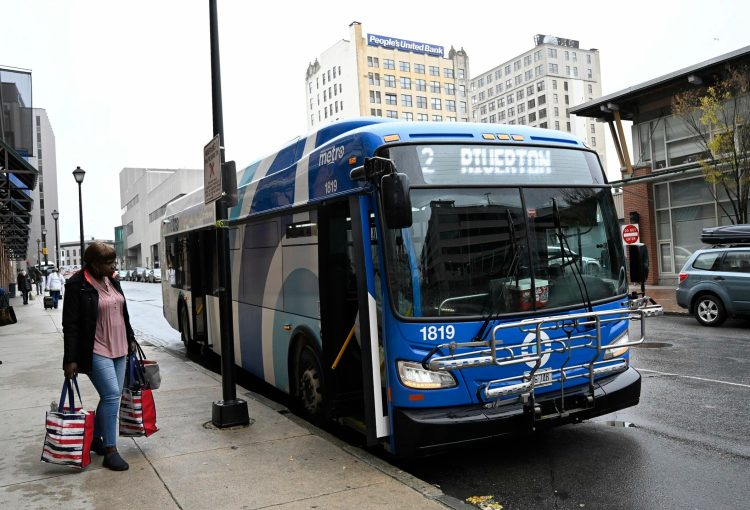Expanding public transit is one of the top priorities for residents and public officials in Greater Portland, a point that could determine regional transportation funding and planning.
Now the Greater Portland Council of Governments, a regional planning agency, wants the region to say, in an online survey, how to improve transit and spend limited funding.
Since last year, the council has asked local officials and the public, through an online survey with more than 700 respondents, to catalog the region’s transportation priorities, said Sara Zografos, the agency’s transportation director.
The aim was to find what goals from the region’s 20-year transportation plan are most important to the area, and most worthy for limited funding.
The findings confirmed what the agency officials already thought – mass transit, pedestrian and cycling updates, improved intersections, road maintenance and better land use planning emerged as the top five priorities.
“This highlights again that transit is really important to the region and we have to do some thoughtful planning and investment to make a priority what we are being told is a priority,” Zografos said.
Less important were accessing the Portland peninsula, diverting traffic onto nearby highways and expanding roads, according to the survey results.
Those findings guide where the council directs federal money for construction and planning.
“We are going to focus on these areas, but we are not going to let the other ones fall off, either,” she said. “It is just not going to be as high a priority.”
The agency already devotes most of the federal funding it receives to public transit. Last year, a federal funding pass-through organization within the council devoted $18.6 million to transit, compared to $5.7 million for road projects, Zografos said.
When given the chance to make hypothetical funding choices, survey respondents overwhelmingly selected road maintenance, public transit and bike and pedestrian improvements over other considerations.
Transit ridership has gone up 13 percent in the last six years, according to the council. Greater Portland Metro has grown ridership and added new bus lines in the past five years and the Amtrak Downeaster passenger rail has improved service and boosted ridership.
But the region’s seven bus, train and ferry services lack coordinated timetables, and some people have difficulty accessing transit routes, said Stephanie Carver, planning director at the council.
The agency is holding another online survey until Aug. 23 to find out what trade-offs residents will accept, and where to devote limited funding. For example, would bus riders prefer faster service with fewer stops? Or service to more locations but fewer buses per hour?
The survey is part of Transit Tomorrow, a 30-year regional mass transit plan.
“This is really designed to communicate the idea we have a certain amount of funding and we need to make difficult choices and prioritize investments,” Carver said.
“We want to hear from the public, transit riders and people who maybe don’t use transit, and find out what they think.”
Send questions/comments to the editors.




Success. Please wait for the page to reload. If the page does not reload within 5 seconds, please refresh the page.
Enter your email and password to access comments.
Hi, to comment on stories you must . This profile is in addition to your subscription and website login.
Already have a commenting profile? .
Invalid username/password.
Please check your email to confirm and complete your registration.
Only subscribers are eligible to post comments. Please subscribe or login first for digital access. Here’s why.
Use the form below to reset your password. When you've submitted your account email, we will send an email with a reset code.